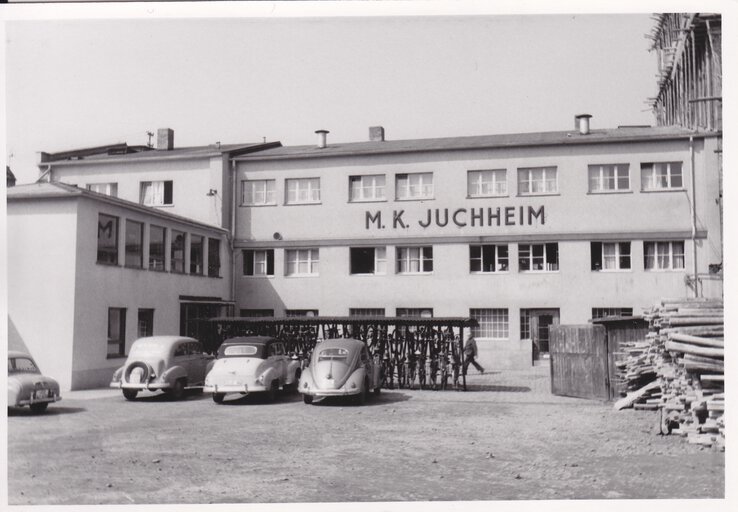

75 young trees in the Rhön planted for future generations
Now, hopefully, they will flourish splendidly in the centuries to come: 75 Elsbeere and Speierlinge trees were planted by JUMO management at the Hofbieber forestry office over the weekend.
Downloads
JUMO is celebrating its 75th anniversary this year with all employees on various occasions. One of a total of 10 employee campaigns is the "Tree Planting Campaign 75", in which the "75 Years of JUMO" project team planted trees together with the shareholders Bernhard and Michael Juchheim, the managing directors Dimitrios Charisiadis and Dr. Steffen Hoßfeld, and the division managers.
Elsbeere tree has many uses
The service tree is a relative of the mountain ash that requires very little water. Its fruits can be processed into jam, juice or schnapps. The wood grows slowly, but is valued for its hardness in furniture and musical instrument making. Such a tree can grow up to 300 years. The Speierling also belongs to the rose family. It is considered a wild fruit tree and is still very rare in the Rhön forests. It is similar to serviceberry and is well suited for forest edge landscaping and expanding the range of tree species.
"Currently, the forest is suffering from the extreme conditions of recent years. Drought, heat and storms are giving the forest trees a hard time," says Florian Wilshusen, forestry office manager at the Hofbieber forestry office (HessenForst). First and foremost, spruce is failing over large areas, but beech and other tree species are also showing signs of dieback and weak vitality. Where spruce has failed over large areas, open spaces have now been created that need to be reforested.
Beech and spruce dominate the Rhön
The JUMO planting campaign has now also taken place on such an open area in the Hilders forest district. The Hofbieber forestry office looks after about 14,000 hectares of forest, most of which is in the Hessian Rhön. The forests are characterized by beech and spruce, which dominate with one third each. Other important tree species are oak, pine and larch. This area is managed by the forestry office with currently nine hunting grounds. Overall, it is expected that the proportion of spruce will decrease significantly in favor of tree species such as beech, birch and maple.
In the future, there will be less spruce and more hardwood.
"So in winter, the forests will then no longer be green, but bare. In addition, the forest stands will rejuvenate and will no longer be as stocked," explains Christoph Prinz, responsible head of the Hilders district (HessenForst). Citizens can all do their part to protect the climate, Wilshusen and Prinz emphasize. Saving CO2, using less water, buying regional products, using a bicycle instead of a car or a car instead of a plane - all these are possible measures, they say.
The now successful planting campaign will be repeated in November. The "Tree Planting Campaign 2023" will follow at the beginning of November, when more than 100 employees will create the "Anniversary Forest 75 Years of JUMO". Oaks will be planted then.
